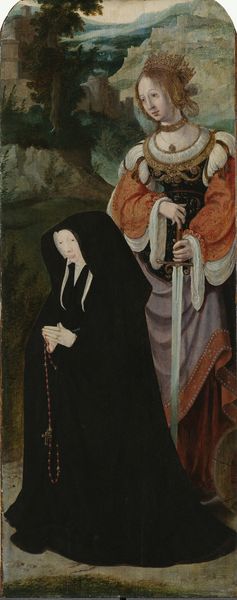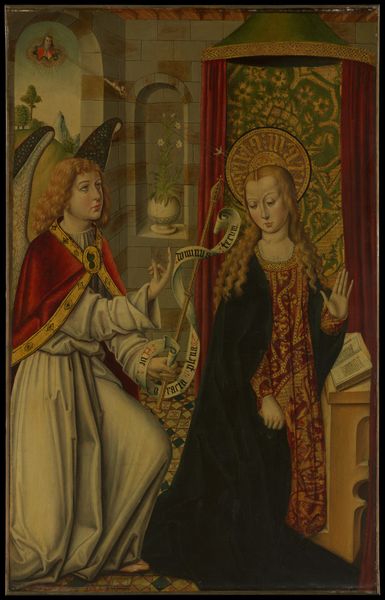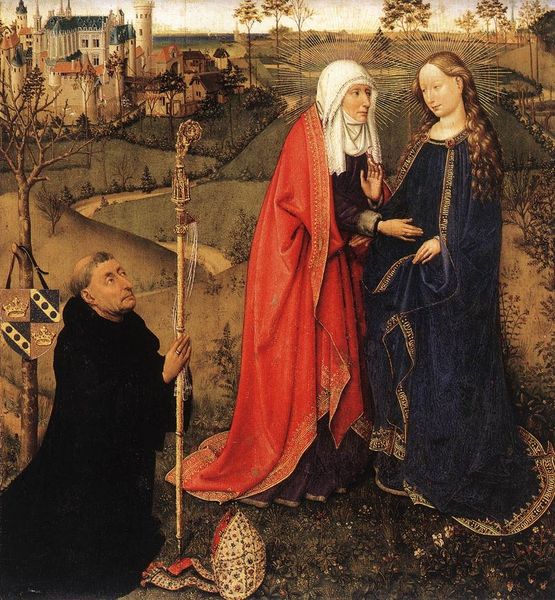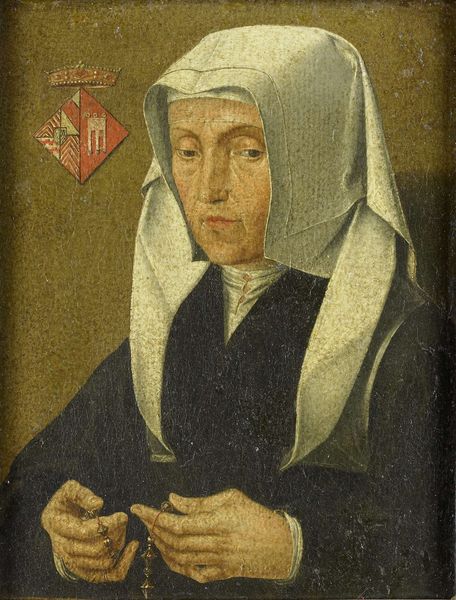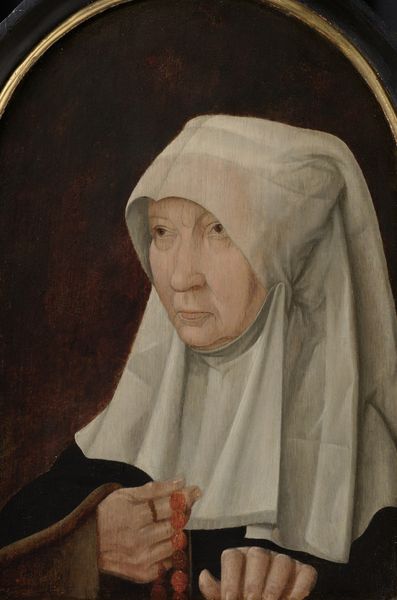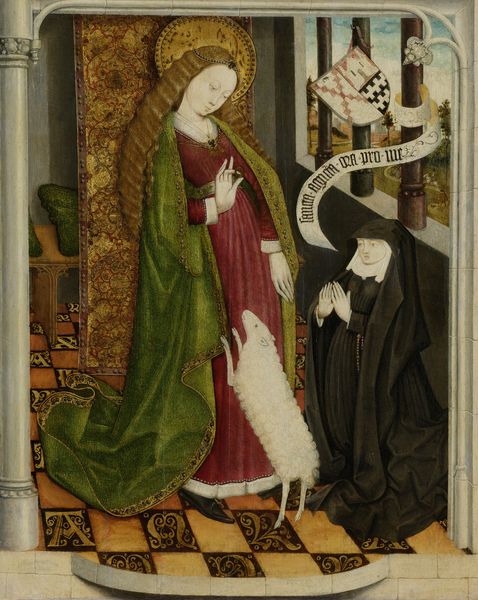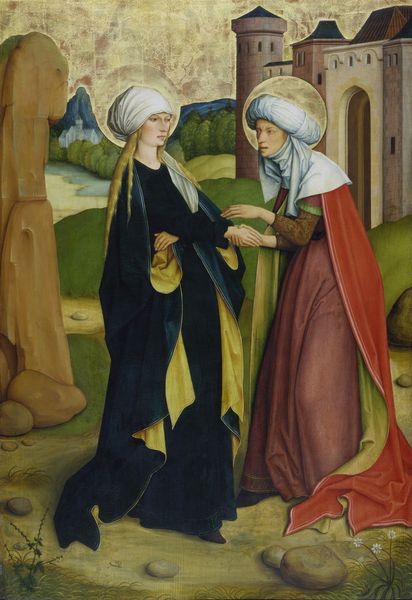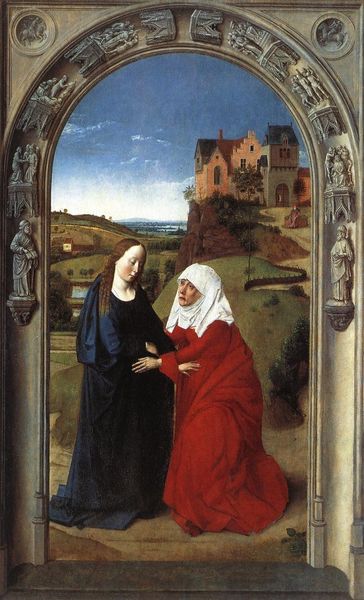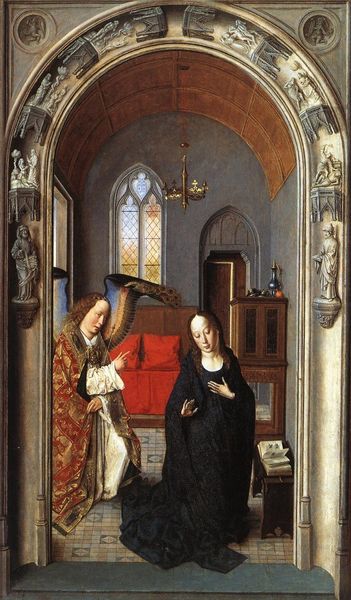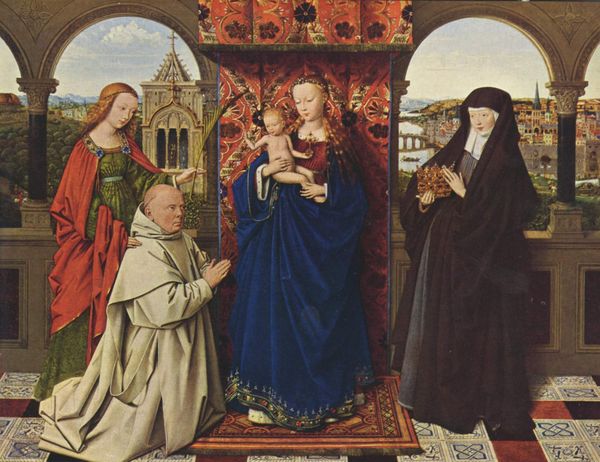
Saint Gertrude of Nivelles and an Augustinian Canoness 1525 - 1550
0:00
0:00
oil-paint
#
portrait
#
oil-paint
#
oil painting
#
northern-renaissance
#
portrait art
#
watercolor
Dimensions: 65.3 × 22.7 cm (25 11/16 × 8 15/16 in.) Original image: 64 × 21.9 cm (25 3/16 × 8 5/8 in.)
Copyright: Public Domain
Curator: This compelling oil painting, dating roughly from 1525 to 1550, is called "Saint Gertrude of Nivelles and an Augustinian Canoness." The artist, unfortunately, remains anonymous. What’s your initial take? Editor: Serene. It’s deeply calming, despite the formality. There’s something about the light in the landscape backdrop, and how it throws the figures into almost stark relief. It feels very staged, very deliberate. Curator: Absolutely, a careful dance of devotion. The Saint is shown with her crozier and book, while the Canoness kneels in supplication. Consider how Gertrude’s crozier, a symbol of her abbatial authority, nearly pierces the heavens. Is it earthly power reaching for the divine, or the other way around? Editor: Ah, now you’re making me think. The crozier… traditionally, a shepherd’s crook. Leadership, guidance. But positioned as it is, almost a visual spear. Are we meant to consider her spiritual authority a form of power, a protective force? And the book in her hand - it all emphasizes learning, contemplation. The symbols really build up layers here, don’t they? Curator: They do. Gertrude, as the patron saint of travelers, innkeepers, and gardeners… there's an intersection there between physical and spiritual well-being, nurturing and guidance. All interwoven with potent cultural significance. And then we consider the Canoness... Her humble pose... Is it obedience? Or perhaps the potential for enlightenment? Editor: Her clasped hands mirror the stillness in her heart. Her attire suggests a rejection of worldly vanity in the service of her ideals. There's the dynamic that arises out of these contrasting images - power and devotion in the presence of this verdant natural setting, that makes one think about faith not as something separate from our world but integrated into it. The dark tree behind Gertrude becomes a supporting column and frames her presence with an intriguing weightiness. It echoes both the shadows of earthly existence and the growth that springs from life’s mysteries. Curator: Beautifully articulated. There is such subtlety in this unknown artist's ability to use familiar, almost rigid, iconographic elements to generate a real emotional presence, even after all these centuries. Editor: Agreed. Even within those confines of visual language, we're still connecting to a very human expression of faith. The artwork becomes a meditative act of prayer for both those depicted and for us as the witnesses centuries later.
Comments
No comments
Be the first to comment and join the conversation on the ultimate creative platform.
